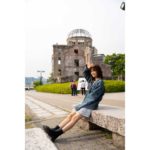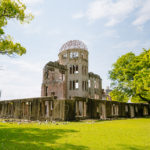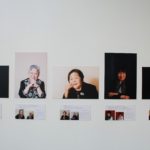2. Medical Care for Survivors and Study of the Aftereffects Conducted by Physicians
Hiroshima’s air defense was inadequate, causing many casualties from the atomic bombing. Without regard for their own injuries, the healthcare professionals who narrowly escaped death treated people in bombed medical facilities and rescue stations built in schools, temples, bridges, roads, and parks. Hiroshima Prefecture confirmed at least 53 rescue stations. In addition, members of the Hiroshima City Branch of the Hiroshima Prefectural Medical Association were reportedly engaged in relief activities at 102 stations.
In the late 1940s, doctors in Hiroshima were engaged in medical treatment for A-bomb survivors and conducted research on their health conditions before such medical care was systematically conducted. Specifically, Doyokai (“Saturday Meetings”) were established by young physicians in 1948: Akira Masaoka (obstetrics and gynecology), Tomin Harada (surgery), Jun Makidono (Radiology), Gensaku Oho, Muneyuki Mizuno, Kiyoshi Takeda (internal medicine) Hideo Goto, Genro Tsuchiya (ophthalmology), Ken Takeuchi, Shunji Fujii (surgery), and Kazuo Takiguchi (Otolaryngology), and others. (The number of members fluctuated). They gathered at a member’s house once a month and continued their research7). The doctors studied whether the survivors’ immune systems were weak, whether they were more susceptible to anemia and other diseases, whether they had shorter life spans, etc. Specifically, Oho investigated the causes of death of A-bomb victims using his own funds. He also made a presentation of his findings on the significant increase in cancer incidence among A-bomb survivors at Doyokai in 1951. Furthermore, he presented at the third meeting of the Hiroshima Nagasaki Subcommittee of the Liaison Council for Research Study on Countermeasures for Atomic Bomb Damage, held in Hiroshima City on July 12, 1955. His research drew many reactions 8).
Harada successfully conducted a pedicle flap transplantation surgery on a boy whose legs were deformed due to keloids and scars and could not walk. This surgery was improved based on advice by Makidono, who proposed irradiation before the surgery. It is not confirmed whether they were the members, Shigenori Sugimoto and Ayao Koyama researched correlations of the atomic bombing and eyes, specifically cataract.
Coverage of issues related to the atomic bombings, which had been suppressed under the “press code”, began when Japan regained its independence in 1952. There was news on “Genbaku Otome” (A-bomb Maidens) receiving medical treatments in Tokyo, Osaka, and the United States. In a reaction to this, physicians in Hiroshima made efforts to provide free treatment, saying that “treatment should be conducted by local doctors”. Hiroshima City heard of this, and decided to implement treatment for A-bomb survivors with the help of the Hiroshima City Medical Association. Finally, on January 13th, 1953, the Hiroshima Atomic Bomb Survivors’ Treatment Council (ABSTC) was established and started free treatment for survivors.
Amidst such circumstances, Nakayama, who had been advocating the necessity of health care for A-bomb survivors in the entire city, conducted field research on A-bomb survivors in the Danbara district using “Genshibakudan Hibakusha Seizon Chosahyo” (Survey on A-bomb survivors). Nakayama created the Atomic Bomb Survivor’s Health Handbook, which included information such as a master file number, address, name, location where the person was exposed to the A-bomb, shielding, injuries and acute disease. With this handbook, A-bomb survivors were able to receive medical treatments and check-ups anytime and anywhere, and the results were recorded in the column in the handbook. If any abnormalities were found, they could consult doctors by receiving ABSTC. It is said that these attempts had a great influence on the projects such as health examinations designed for survivors after the Act for Atomic Bomb Sufferers’ Medical Care was established 9).
7) Hirosmi Nakayama(1960,December) “Doyoukai ni Tsuite” (About Saturday Meetings), in Hiroshimashi Ishikai Dayori Dai Goju rokugo (Hiroshima City Medical Association New Letter Vol.6), p.17. For further information about Doyokai, refer to Hiroshima City Medical Association (Ed.), Hiroshimashi Ishikaishi 2nd Edition, (History of the Hiroshima City Medical Association), Hiroshima City Association, 1980, pp.330-333
8) “Genbaku Kouishougai Kenkyu no Rutu wo Saguru”in Hiroshima Ishikai Dayori 160 gou,August 1979. This materials are recorded in Hiroshima Ishi no Karute (Medial Record of Hiroshima Physicians), 1989
9) Hiroshima City Medical Association (1980), p.333






